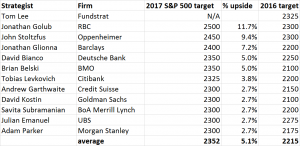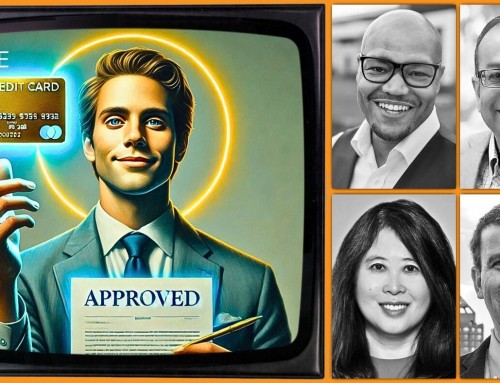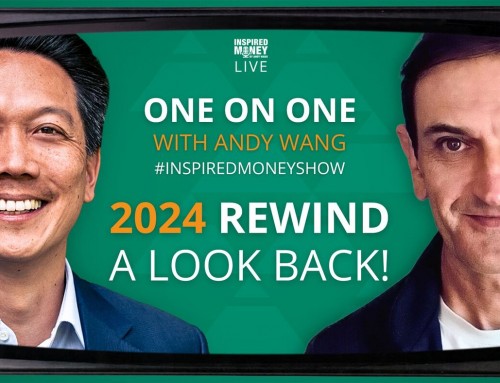As we near a close to 2016, it is time to look forward to 2017. We have done this in 2014, 2015, and 2016 so it is becoming a tradition to see which strategists did well and which missed the mark. What do the experts think will happen in 2017 and should we even care?
Perhaps you are familiar with Philip Telock's landmark UC Berkeley study that looked at 82,000 predictions over 25 years by 300 leading economists. It turned out that their so called expert views were no better than random guesses, and worse, the more famous, the less accurate the prediction.
Last year, the strategists predicted a bull market for 2016 and they almost hit the number right on the mark. Their average forecast was for a 7.2% gain in the S&P 500 to 2215. They should get a round of applause as the S&P finished at 2239. Well done. Deutsche Bank's David Bianco gets the highest grade with a forecast of 2250, only missing by 11 points. Barclays' Jonathan Glionna should also be given a trophy as he was within 2% for the past couple of years. Let's look at the numbers.
Predictions for 2017
After looking at all the Wall Street reports, I compiled the predictions from 11 top stock market strategists (the eternal bull Tom Lee hasn't released his 2017 forecast). For 2017, the average price target for the S&P 500 is 2352 or a 5.1% return. Let's take a look at the forecasts and I've also included their predictions from last year so you can see if they are bullish or even more bullish – bears are clearly in hibernation.

Bull isn't tired yet
Last year's two most accurate strategists, Bianco and Glionna, are also two of the most bullish on the street. Glionna has a bullish target of 2400 (+7.2%) and BIanco has a target of 2350 (+5%). They both see corporate tax rates falling with the new administration which will translate to higher earnings. Here are their other reasons for seeing blue skies ahead.
Bianco on the market:
Republican sweep economic policies will be more about deregulation and tax cuts than protectionism or huge spending. We think so because big actions require legislation, which Congress will shape. This Congress is likely to resist surging deficits, protectionism and executive overreach… The corp tax rate is likely cut in the first 100 days and other proposed major corp tax code changes deferred… A 15% corp tax rate is unlikely, but if cut to 25% from 35% it would align with the OECD avg and likely raise the deficit by only ~0.5% of GDP until growth can offset it. Cutting to 25% cuts repatriation taxes on a permanent basis and will also provide small businesses that want to reinvest their profits for growth a more tax efficient alternative than pass through entities. A 25% corp tax rate, all else equal, would boost S&P EPS by $10 and support a quick S&P rally to 2300 and 2400 by 2017 end.
According to Glionna analysis, more robust revenue growth will dwarf the downward pressure from wage inflation. Furthermore, nominal growth rate for the U.S. economy of 4.8 percent in 2017 will be the biggest motor for S&P 500 companies' improved earnings.
Glionna on the market:
…Upside could be as high as $133 based on our analysis of President-elect Trump’s economic and trade plans… The primary adjustment comes from lower taxes. If the statutory tax rate of the S&P 500 falls from 26% to 18% for the full year 2017, which is the assumption we used in 2017 EPS Outlook: Upside under the Trump plan, it would add $13 to EPS… While lower tax rates could be a material positive for earnings there are some offsets that need to be considered, as President-elect Trump’s plans could also create adverse outcomes. Expansionary fiscal policy is likely to lead to higher interest rates which will likely in turn create relative strength for the USD. A strong U.S. dollar is bad for S&P 500 profits because a significant portion of earnings are derived overseas.
What do you think will happen in 2017? Are you a bull or a bear for the New Year?
By






